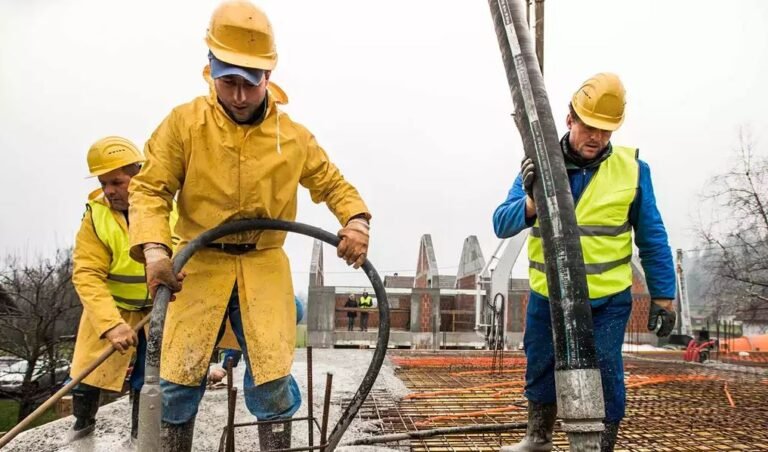Essential Aspects of Field Service

With fieldwork as complex as it gets, construction businesses would do well to deploy new tech and use further training to step up the work.
Another aspect that mustn’t be overlooked is frontline team engagement. Frontline workers have been looking for better work conditions since the latest pandemic. As a result, “58% of organizations that employ frontline workers have invested in improving their employee experience,” according to the 2022 Gartner Frontline Worker Experience Reinvented Survey.
Apparently, “employee experience” falls short in work schedule and paid leave departments. Still, the chief reason frontline workers leave their employers en masse is a poor relationship with the management.
It follows that frontline managers need continual education, especially since universities need to go further in providing field experience.
Make it the first tip: send your managers to observe fieldwork and gather the necessary experience.
Next, consider new tech that can help you streamline fieldwork processes, including updated manufacturing trends.
Let’s take a look at best practices.
Use Predictive Analytics
Statistical and modelling techniques have been deployed to forecast future outcomes for quite a while, and construction is no exception.
Businesses report that predictive analytics have helped them optimize and streamline several processes and best practices, so it’d be a pity not to use this approach in construction.
As the term portends, analytics deals with analyzing large volumes of data — a trait employees cannot hope to achieve quickly and with the equivalent precision.
Construction deals with lots of calculations and following through the complex stages can get tricky in the face of the variable circumstances.
Creating prediction models can help in several ways. Predictive field service management can help the workforce finish their goals faster and with some added precision, but it can also address the other troublesome aspects mentioned above.
For one thing, flexible work models and schedules can significantly benefit from predictive analytics. The freedom to balance their work-life activities will boost workers’ engagement and satisfaction.
Use Field Service Automation Software
Field service automation software is a godsend for construction businesses. It enables technicians to stick to precise procedures and regularly update clients on developments without spending hours on calculations and estimates. Finally, it keeps track of the workers, job equipment, and job orders.
Field service automation software streamlines checklists, communication details, collaboration, inventory management, and workflow routing, breaking administrative tasks into smaller tasks.
All these functionalities boost customer experience and help step up workforce productivity.
1. Artificial Intelligence to the Rescue
Artificial intelligence (AI) can help significantly optimize facility maintenance. Specifically, AI enables remote equipment management.
If you haven’t guessed already, we’re talking about the Internet of Things (IoT), which uses precision sensors for the following procedures:
- Establishing baselines for asset performance indicators
- Determining upper and lower limits of asset performance
- Collecting utilization data
- Transmitting data to AI-empowered software
Finally, this technology compares current performance data with historical data, which can help with project prediction and maintenance.
2. Centralized Dispatching
Centralized dispatching ensures stellar information sharing and accurate inventory tracking.
It also helps with transportation and resource tracking (drivers, vehicles, and resources included), enabling real-time scheduling and route optimization.
3. Real-Time Delivery Tracking
Real-time delivery tracking software solutions will help frontline workers and customers’ engagement and satisfaction.
Merely a streamlined electronic proof of delivery, for example, can help businesses retain their customers and help frontline teams focus on more specific tasks instead of wasting time tracking each order.
Workplace Safety
Finally, workplace safety is critical for construction businesses. Safety checklists for construction, and more can benefit greatly from specialized software solutions and education efforts.
Construction workers need to be adequately educated on how to stay safe at all times.
Safety responsibility is, in fact, equally upon the employer and the employee, but the former needs to provide adequate equipment and training.
Do Read: Finding Your Dream Drive: Navigating the Car Buying Journey in London
Educate Your Team About Work Safety Hazards
Work safety hazards include:
- Chemical hazards include acids, solvents, paints, cleaning products, vapours, and gases.
- Biological hazards include flammable materials, mould, fungi, insects, animals, bacteria, viruses, poisonous plants, blood, bodily fluids, pesticides, etc.
- Ergonomic hazards — improper posture, heavy lifting, etc.
Safety equipment is designed to help with the risks related to physical injury and specific biological and chemical hazards. Still, much rides on the knowledge of the worker, so prioritizing education is crucial.
Construction Personal Protective Equipment (PPE)
Construction PPE is designed by established standards and obligatory by the law. It includes the following
- Skin protection equipment
- Respiratory protective equipment
- Eye protection equipment
- Head protection equipment
- Ear protection equipment
- Foot protection equipment
- Hand and arm protection equipment
- Body protection equipment
- Fall protection equipment
Safety Hazard Training
Educating workers on safety hazards is in place. At the very least, training programs should cover the following topics:
- Tool and equipment safety
- Gear and safety measures
- Ground checks (spills and objects that can cause tripping)
- Mechanical assistance for heavy objects
- Emergency exits best practices (keep them accessible and unobstructed)
- Location of first aid kits
- Signage for identifying hazardous areas and materials
- First aid personnel (who to go to in case of an injury)
With all these approaches combined, construction businesses can enhance their procedures and ensure worker safety. Procedure streamlining and employee safety should be the two main priorities. Still, it is also necessary to provide work schedule flexibility to keep workers engaged.






